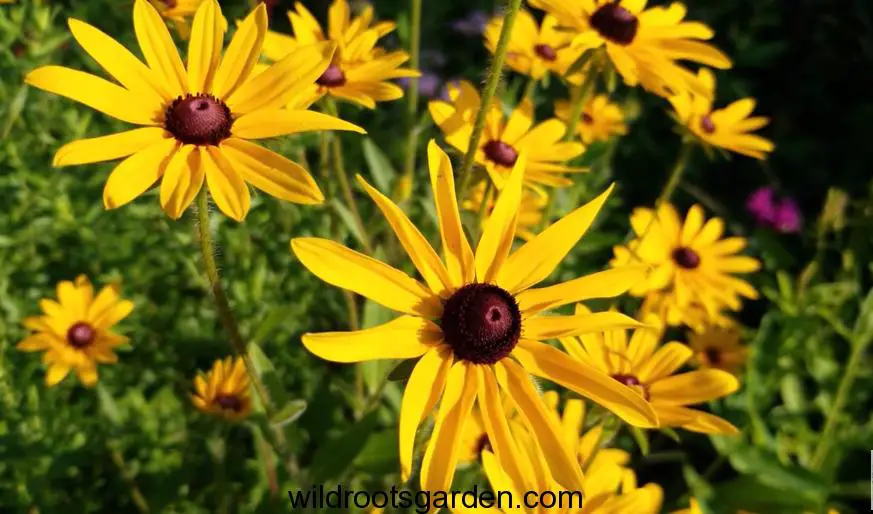Growing Perennial Flowers That Bloom All Summer: Perennial flowers are a fantastic option for anyone seeking a low-maintenance garden that is bursting with color all summer. These flowers return year after year, providing beautiful blooms throughout the spring, summer, and fall. While some perennials only bloom for a brief period, many long-blooming varieties can keep your garden looking stunning for months. By selecting the right species, you can enjoy a garden that blooms from spring through fall and continues to thrive year after year. Consider adding any of these 21 perennials to your garden for an extended period of gorgeous blooms that will make your yard the envy of the neighborhood.
JUMP TO TOPIC
- 1 21 Long-Blooming Perennials That Flower All Summer Long
- 2 1.Anise Hyssop (Agastache)
- 3 2. Bluestar (Amsonia)
- 4 3. Coneflower (Echinacea)
- 5 4. Daylily (Hemerocallis)
- 6 5. Coreopsis
- 7 6. Salvia
- 8 7. Sedum
- 9 8. Verbena
- 10 9. Lavender
- 11 10. Gaillardia
- 12 11.Bee Balm (Monarda)
- 13 12. Astilbe
- 14 13. Hostas
- 15 14. Cranesbill (Geranium)
- 16 15.Russian Sage (Perovskia atriplicifolia)
- 17 16. Black-eyed Susan (Rudbeckia)
- 18 17.Black Cohosh (Actaea racemosa)
- 19 18. Catmint (Nepeta)
- 20 19. Heliopsis
- 21 20. Hibiscus
- 22 21. Penstemon
- 23 Source
21 Long-Blooming Perennials That Flower All Summer Long
Here are 21 long-blooming perennials that will flower all summer:
- Anise Hyssop (Agastache)
- Bluestar (Amsonia)
- Coneflower (Echinacea)
- Daylily (Hemerocallis)
- Coreopsis
- Salvia
- Sedum
- Verbena
- Lavender
- Gaillardia
- Bee Balm (Monarda)
- Astilbe
- Hostas
- Cranesbill (Geranium)
- Russian Sage (Perovskia atriplicifolia)
- Black-eyed Susan (Rudbeckia)
- Black Cohosh (Actaea racemosa)
- Catmint (Nepeta)
- Heliopsis
- Hibiscus
- Penstemon
1.Anise Hyssop (Agastache)
Anise hyssop (Agastache) is a perennial plant that is native to North America. It is known for its fragrant leaves and spikes of purple, blue, or white flowers. Anise hyssop is a popular choice for perennial gardens because it is easy to grow and blooms all summer.

Zones: Anise hyssop is hardy in USDA zones 3–9.
Size: Anise hyssop can grow to be 2-4 feet tall and 1-3 feet wide.
Growing conditions: Anise hyssop prefers full sun or partial shade and well-drained soil. It is tolerant of heat and drought.
2. Bluestar (Amsonia)
Bluestar (Amsonia) is a perennial plant that is native to North America. It is known for its star-shaped blue flowers and its ability to thrive in a variety of soil and climate conditions. Bluestar is a popular choice for perennial gardens because it is easy to grow and bloom all summer long.

Zones: Bluestar is hardy in USDA zones 4-9.
Size: Bluestar can grow to be 2-4 feet tall and 2-3 feet wide.
Growing conditions: Bluestar prefers full sun or partial shade and well-drained soil. It is tolerant of heat, drought, and poor soil conditions.
3. Coneflower (Echinacea)
Coneflower (Echinacea) is a perennial plant that is native to North America. It is known for its daisy-like flowers with spiky centers. Coneflowers come in a variety of colors, including purple, pink, white, and yellow. Coneflowers are a popular choice for perennial gardens because they are easy to grow and bloom all summer long.
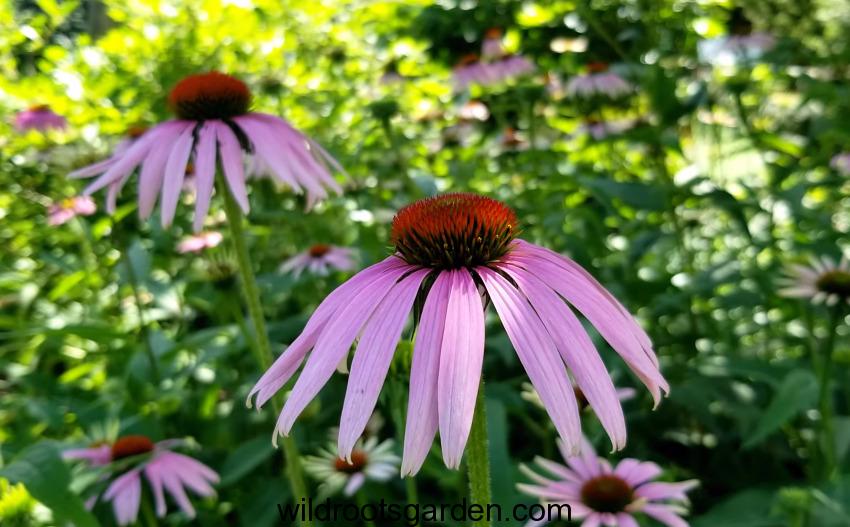
Zones: Coneflowers are hardy in USDA zones 3-9.
Size: Coneflowers can grow to be 2-4 feet tall and 1-3 feet wide.
Growing conditions: Coneflowers prefer full sun or partial shade and well-drained soil. They are tolerant of heat and drought.
4. Daylily (Hemerocallis)
Daylily (Hemerocallis) is a perennial plant that is native to Asia. It is known for its trumpet-shaped flowers and its ability to bloom all summer long. Daylilies come in a wide variety of colors, including red, orange, yellow, pink, purple, and white. Daylilies are a popular choice for perennial gardens because they are easy to grow and low-maintenance.
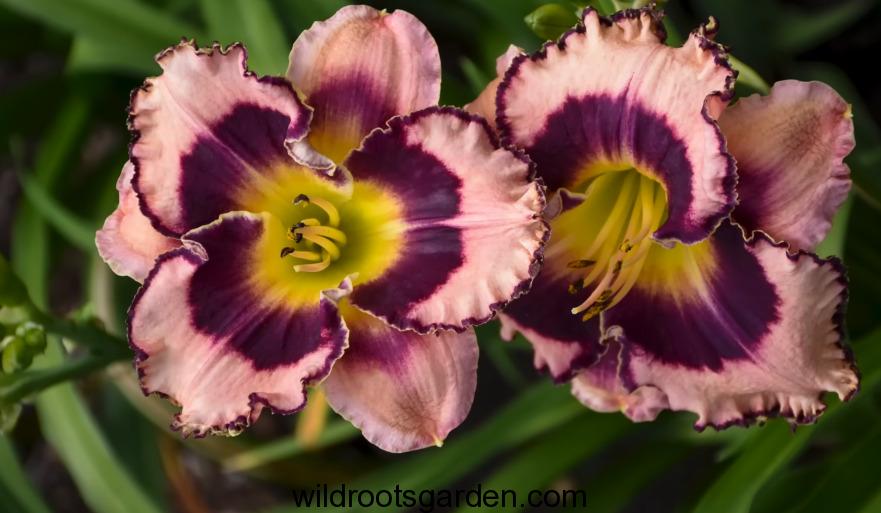
Zones: Daylilies are hardy in USDA zones 3-9.
Size: Daylilies can grow to be 1-6 feet tall and 1-3 feet wide.
Growing conditions: Daylilies prefer full sun or partial shade and well-drained soil. They are tolerant of heat and drought.
5. Coreopsis
Coreopsis is a genus of flowering plants that are native to North and South America. They are known for their cheerful daisy-like flowers in shades of yellow, orange, and pink. Coreopsis are a popular choice for perennial gardens because they are easy to grow and bloom all summer long.
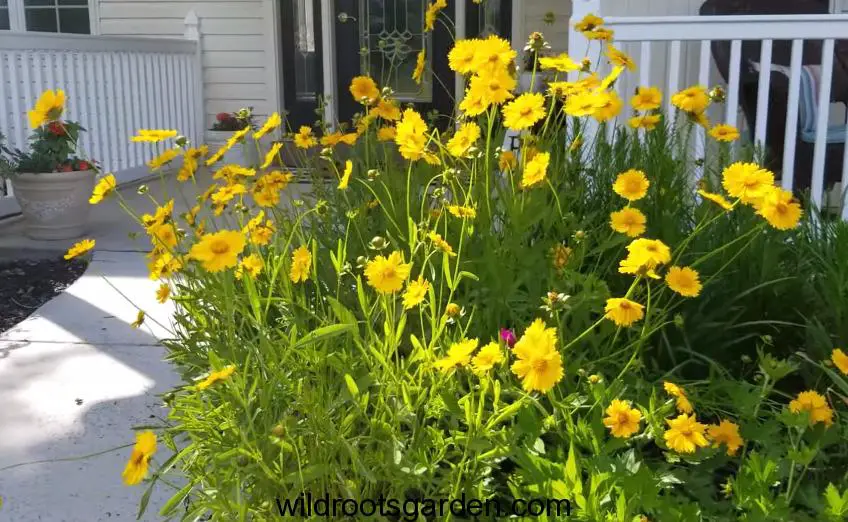
Zones: Coreopsis are hardy in USDA zones 3-9.
Size: Coreopsis can grow to be 1-3 feet tall and 1-2 feet wide.
Growing conditions: Coreopsis prefer full sun or partial shade and well-drained soil. They are tolerant of heat and drought.
6. Salvia
Salvia is a genus of flowering plants in the mint family Lamiaceae. It contains over 700 species of annuals, perennials, shrubs, and small trees. Salvia is native to tropical and temperate regions of the world, but it is most concentrated in Central and South America.

Salvia is known for its diverse range of flower shapes and colors. Some salvia species have small, tubular flowers, while others have large, showy flowers in shades of red, pink, purple, white, and blue. Salvia flowers are often fragrant and attract butterflies and hummingbirds.
Salvia is a popular choice for perennial gardens because it is easy to grow and bloom all summer long. Salvia plants are also relatively low-maintenance and can tolerate heat, drought, and poor soil conditions.
Zones: Salvia plants vary in hardiness, but most are hardy in USDA zones 4-9.
Size: Salvia plants can grow to be 1-6 feet tall and 1-3 feet wide, depending on the species.
Growing conditions: Salvia plants prefer full sun or partial shade and well-drained soil. They are tolerant of heat and drought.
7. Sedum
Sedum is a genus of flowering plants in the family Crassulaceae. It contains over 400 species of annuals, perennials, succulents, and shrubs. Sedum is native to all continents except Antarctica, but it is most concentrated in Europe, Asia, and North America.
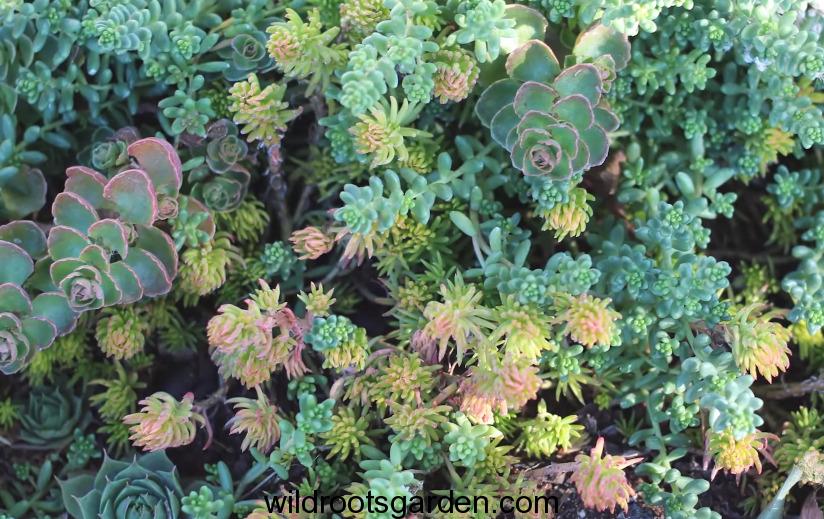
Sedum is known for its fleshy leaves and stems, which allow it to store water and tolerate drought conditions. Sedum plants also have a variety of flower colors, including red, pink, purple, white, and yellow. Sedum flowers are often fragrant and attract butterflies and hummingbirds.
Sedum is a popular choice for perennial gardens because it is easy to grow and low-maintenance. Sedum plants are also relatively slow-growing, so they are a good choice for gardens where space is limited.
Zones: Sedum plants vary in hardiness, but most are hardy in USDA zones 3-9.
Size: Sedum plants can grow to be 1-12 inches tall and 1-12 inches wide, depending on the species.
Growing conditions: Sedum plants prefer full sun or partial shade and well-drained soil. They are tolerant of heat and drought.
8. Verbena
Verbena is a genus of flowering plants in the family Verbenaceae. It contains over 250 species of annuals, perennials, shrubs, and small trees. Verbena is native to tropical and temperate regions of the world, but it is most concentrated in North and South America.
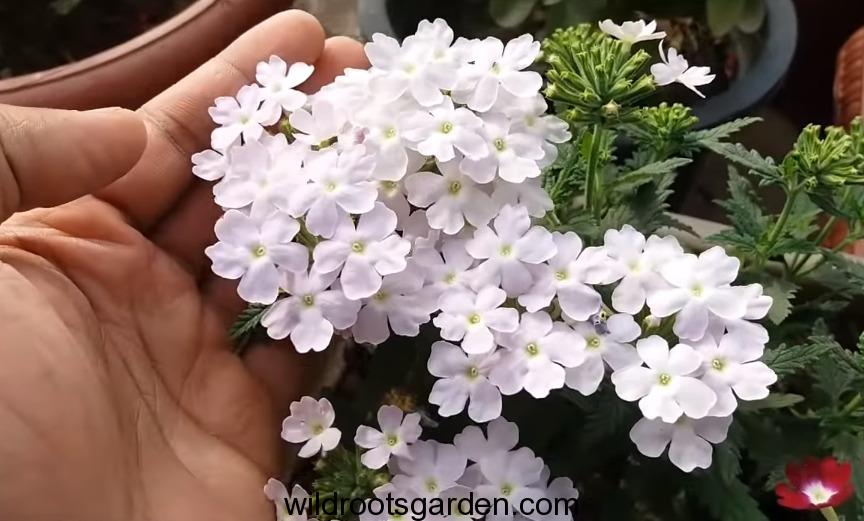
Verbena is known for its clusters of small, brightly colored flowers. Verbena flowers come in a variety of colors, including red, pink, purple, white, and yellow. Verbena flowers are often fragrant and attract butterflies and hummingbirds.
Verbena is a popular choice for perennial gardens because it is easy to grow and bloom all summer long. Verbena plants are also relatively low-maintenance and can tolerate heat, drought, and poor soil conditions.
Zones: Verbena plants vary in hardiness, but most are hardy in USDA zones 3-9.
Size: Verbena plants can grow to be 1-3 feet tall and 1-2 feet wide, depending on the species.
Growing conditions: Verbena plants prefer full sun or partial shade and well-drained soil. They are tolerant of heat and drought.
9. Lavender
Lavender is a genus of flowering plants in the mint family Lamiaceae. It contains over 40 species of annuals, perennials, shrubs, and small trees. Lavender is native to the Mediterranean region and parts of Asia and Africa.
Lavender is known for its fragrant leaves and flowers. Lavender flowers come in a variety of colors, including purple, blue, white, and pink. Lavender flowers are often used in aromatherapy and potpourri.

Lavender is a popular choice for perennial gardens because it is easy to grow and bloom all summer long. Lavender plants are also relatively low-maintenance and can tolerate heat, drought, and poor soil conditions.
Zones: Lavender plants vary in hardiness, but most are hardy in USDA zones 5-9.
Size: Lavender plants can grow to be 1-3 feet tall and 1-2 feet wide, depending on the species.
Growing conditions: Lavender plants prefer full sun or partial shade and well-drained soil. They are tolerant of heat and drought.
10. Gaillardia
Gaillardia, also known as blanket flower, is a genus of flowering plants in the family Asteraceae. It contains over 20 species of annuals, perennials, and shrubs. Gaillardia is native to North and South America.
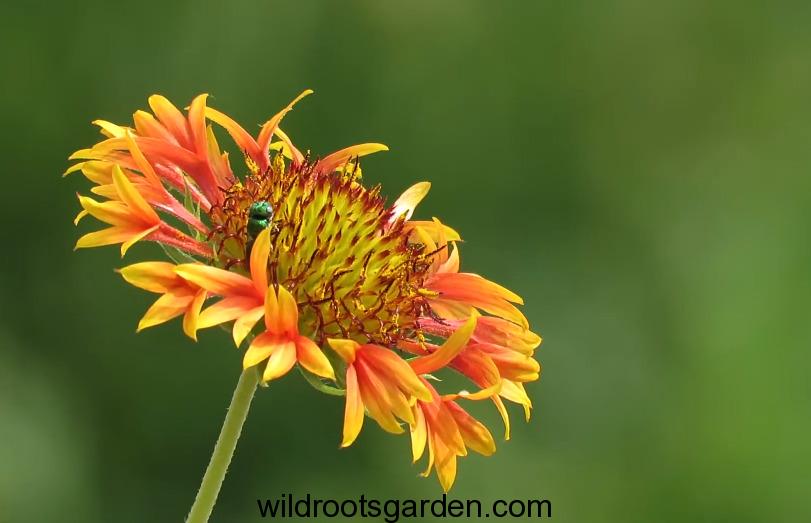
Gaillardia is known for its daisy-like flowers in shades of yellow, orange, red, and brown. Gaillardia flowers come in a variety of shapes and sizes, and some species have bicolored or tricolored flowers. Gaillardia flowers are often fragrant and attract butterflies and hummingbirds.
Gaillardia is a popular choice for perennial gardens because it is easy to grow and bloom all summer long. Gaillardia plants are also relatively low-maintenance and can tolerate heat, drought, and poor soil conditions.
Zones: Gaillardia plants vary in hardiness, but most are hardy in USDA zones 3-9.
Size: Gaillardia plants can grow to be 1-3 feet tall and 1-2 feet wide, depending on the species.
Growing conditions: Gaillardia plants prefer full sun or partial shade and well-drained soil. They are tolerant of heat and drought.
11.Bee Balm (Monarda)
Bee Balm (Monarda) is a genus of flowering plants in the mint family Lamiaceae. It contains over 15 species of annuals and perennials. Bee balm is native to North America, but it has been introduced to other parts of the world.
Bee balm is known for its clusters of brightly colored flowers, which attract bees, butterflies, and hummingbirds. Bee balm flowers come in a variety of colors, including red, pink, purple, and white. Bee balm leaves are also fragrant and can be used to make tea.
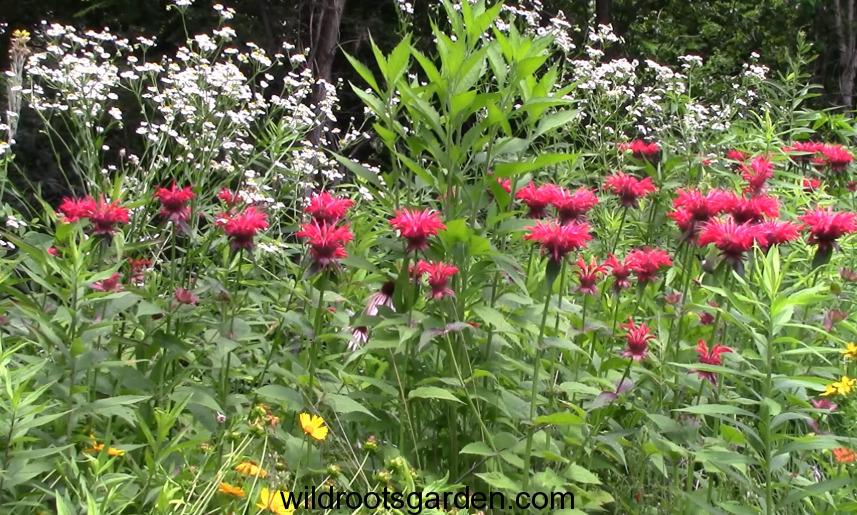
Bee balm is a popular choice for perennial gardens because it is easy to grow and bloom all summer long. Bee balm plants are also relatively low-maintenance and can tolerate heat, drought, and poor soil conditions.
Zones: Bee balm plants vary in hardiness, but most are hardy in USDA zones 3-9.
Size: Bee balm plants can grow to be 2-4 feet tall and 1-2 feet wide, depending on the species.
Growing conditions: Bee balm plants prefer full sun or partial shade and well-drained soil. They are tolerant of heat and drought.
12. Astilbe
Astilbe is a genus of flowering plants in the family Saxifragaceae. It contains over 30 species of perennials. Astilbe is native to Asia and North America.
Astilbe is known for its feathery plumes of flowers in shades of white, pink, red, and purple. Astilbe flowers bloom in mid-summer and can last for several weeks. Astilbe leaves are also attractive and can be fern-like or palmate.
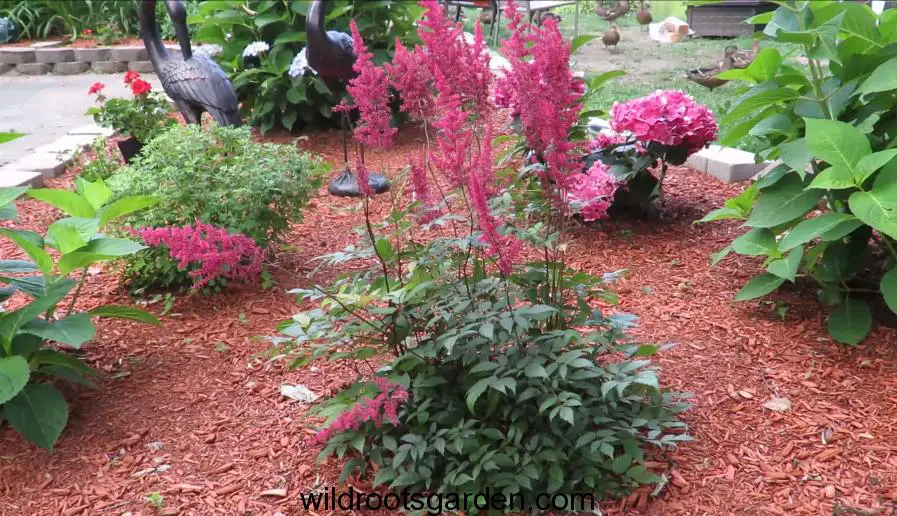
Astilbe is a popular choice for perennial gardens because it is easy to grow and bloom all summer long. Astilbe plants are also relatively low-maintenance and can tolerate heat, drought, and poor soil conditions.
Zones: Astilbe plants vary in hardiness, but most are hardy in USDA zones 3-9.
Size: Astilbe plants can grow to be 1-4 feet tall and 1-2 feet wide, depending on the species.
Growing conditions: Astilbe plants prefer partial shade or full shade and moist, well-drained soil. They are tolerant of heat and drought, but they will bloom best in moist conditions.
13. Hostas
Hostas are a genus of flowering plants in the family Asparagaceae. They are native to East Asia, and there are over 40 species and over 7,000 cultivars of hostas. Hostas are known for their large, heart-shaped leaves and their clusters of bell-shaped flowers in shades of white, purple, and blue. Hostas are a popular choice for perennial gardens because they are easy to grow and low-maintenance.
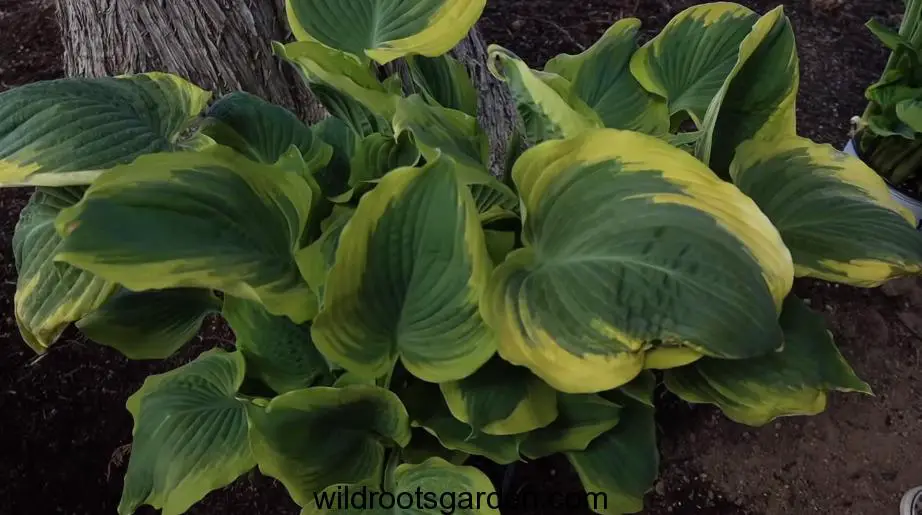
Zones: Hostas are hardy in USDA zones 3-9.
Size: Hostas can grow to be 6 inches to 6 feet tall and 1 to 4 feet wide, depending on the species and cultivar.
Growing conditions: Hostas prefer partial shade or full shade and moist, well-drained soil. They are tolerant of heat, but they will perform best in cooler temperatures.
14. Cranesbill (Geranium)
Cranesbill (Geranium) is a genus of flowering plants in the family Geraniaceae. It contains over 400 species of annuals, perennials, shrubs, and small trees. Cranesbill is native to all continents except Antarctica, but it is most concentrated in Europe and Asia.
Cranesbill is known for its delicate, five-petaled flowers in a variety of colors, including white, pink, purple, and blue. Cranesbill flowers often have a spotted or veined center. Cranesbill leaves are also attractive and can be palmate or lobed.
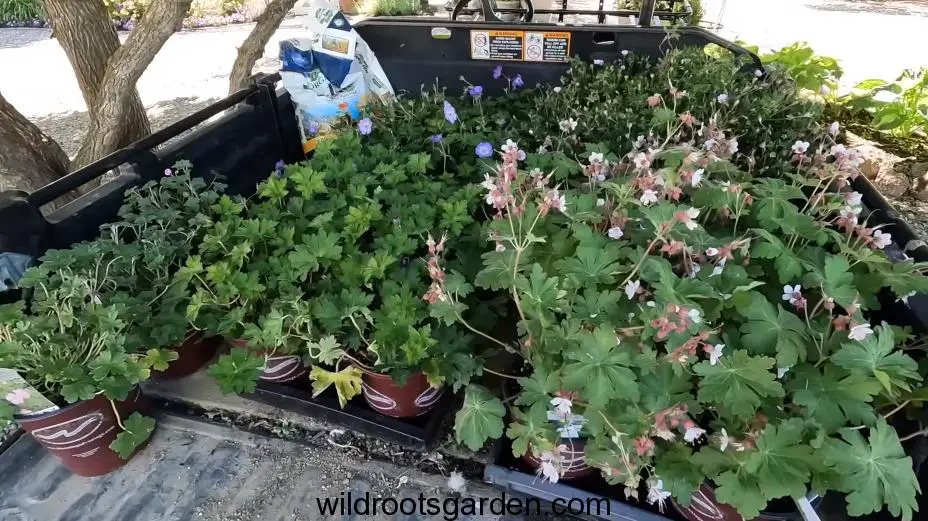
Cranesbill is a popular choice for perennial gardens because it is easy to grow and bloom all summer long. Cranesbill plants are also relatively low-maintenance and can tolerate heat, drought, and poor soil conditions.
Zones: Cranesbill plants vary in hardiness, but most are hardy in USDA zones 3-9.
Size: Cranesbill plants can grow to be 6 inches to 3 feet tall and 1 to 3 feet wide, depending on the species.
Growing conditions: Cranesbill plants prefer full sun or partial shade and well-drained soil. They are tolerant of heat and drought, but they will bloom best in moist conditions.
15.Russian Sage (Perovskia atriplicifolia)
Russian Sage (Perovskia atriplicifolia) is a perennial flowering plant in the mint family (Lamiaceae). It is native to Central Asia and has been cultivated for centuries. Russian sage is known for its long, upright stems of silvery-gray foliage and delicate spikes of violet-blue flowers. It blooms in mid-summer and can continue to bloom until the first frost.
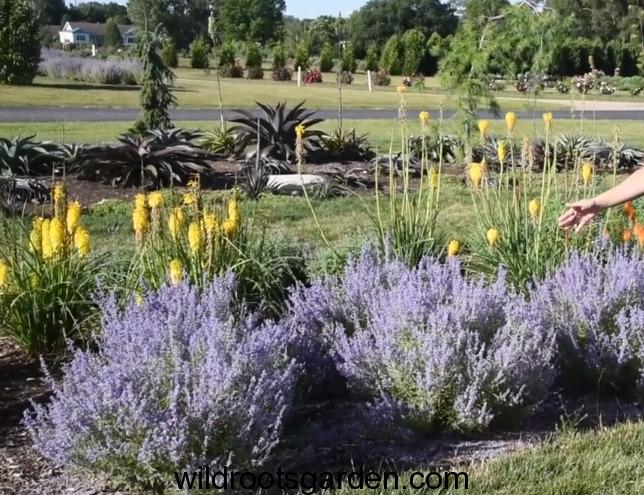
Russian sage is a popular choice for perennial gardens because it is easy to grow, low-maintenance, and drought-tolerant. It is also a good plant for attracting butterflies and other pollinators.
Zones: Russian sage is hardy in USDA zones 4-9.
Size: Russian sage can grow to be 2-4 feet tall and 1-3 feet wide.
Growing conditions: Russian sage prefers full sun or partial shade and well-drained soil. It is tolerant of heat and drought, but it will perform best in moist conditions.
16. Black-eyed Susan (Rudbeckia)
Black-eyed Susan (Rudbeckia) is a genus of flowering plants in the family Asteraceae. It contains over 25 species of annuals and perennials. Black-eyed Susan is native to North and South America, but it has been introduced to other parts of the world.
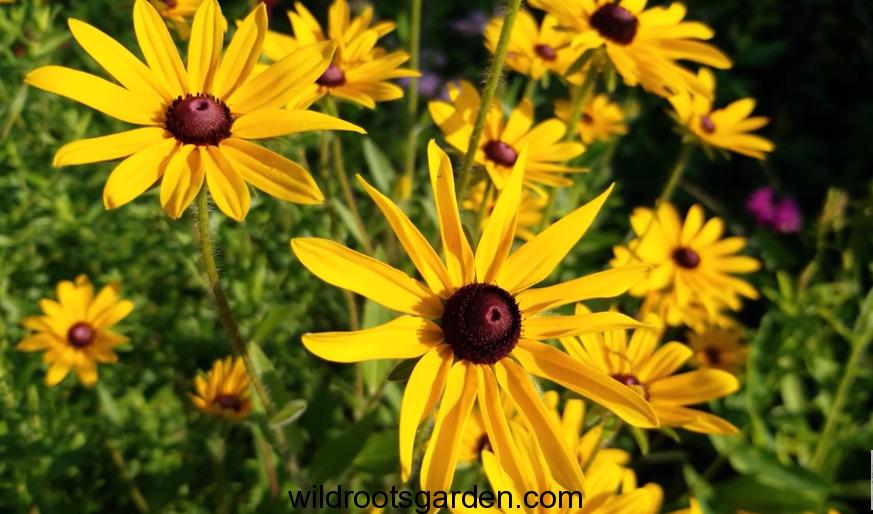
Black-eyed Susan is known for its daisy-like flowers in shades of yellow, orange, and red. Black-eyed Susan flowers have a dark center, which is why they are called black-eyed Susan. Black-eyed Susan flowers bloom in mid-summer and can continue to bloom until the first frost.
Black-eyed Susan is a popular choice for perennial gardens because it is easy to grow and low-maintenance. Black-eyed Susan plants are also tolerant of heat, drought, and poor soil conditions.
Zones: Black-eyed Susan plants vary in hardiness, but most are hardy in USDA zones 3-9.
Size: Black-eyed Susan plants can grow to be 1-3 feet tall and 1-2 feet wide, depending on the species.
Growing conditions: Black-eyed Susan plants prefer full sun or partial shade and well-drained soil. They are tolerant of heat and drought, but they will perform best in moist conditions.
17.Black Cohosh (Actaea racemosa)
Black Cohosh (Actaea racemosa) is a perennial flowering plant in the buttercup family (Ranunculaceae). It is native to North America and has been used for centuries by Native Americans for its medicinal properties. Black cohosh is known for its tall, slender stems and its clusters of small, white flowers. It blooms in mid-summer and can continue to bloom until the first frost.
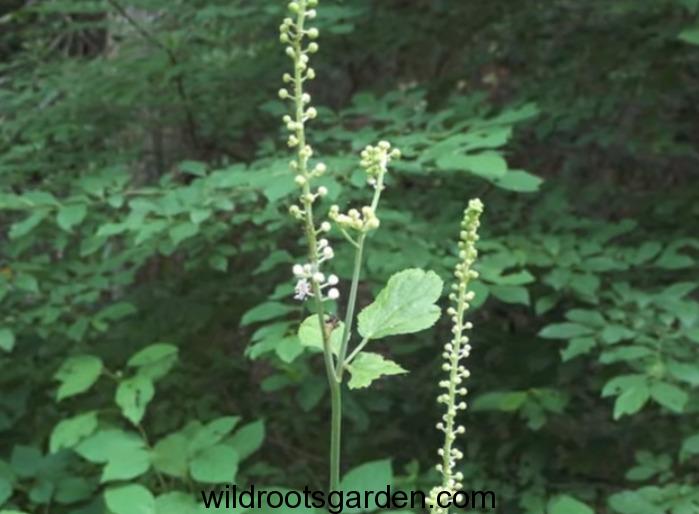
Black cohosh is a popular choice for perennial gardens because it is easy to grow and low-maintenance. It is also tolerant of heat, drought, and poor soil conditions. Black cohosh is also a good plant for attracting butterflies and other pollinators.
Zones: Black cohosh is hardy in USDA zones 3-9.
Size: Black cohosh plants can grow to be 3-6 feet tall and 1-2 feet wide.
Growing conditions: Black cohosh prefers partial shade or full shade and well-drained soil. It is tolerant of heat and drought, but it will perform best in moist conditions.
18. Catmint (Nepeta)
Catmint (Nepeta) is a genus of flowering plants in the mint family (Lamiaceae). It contains over 250 species of annuals, perennials, shrubs, and small trees. Catmint is native to Europe, Asia, and Africa, but it has been introduced to other parts of the world.
Catmint is known for its clusters of small, blue, pink, or white flowers. Catmint flowers bloom in mid-summer and can continue to bloom until the first frost. Catmint leaves are also fragrant and attract butterflies and other pollinators.
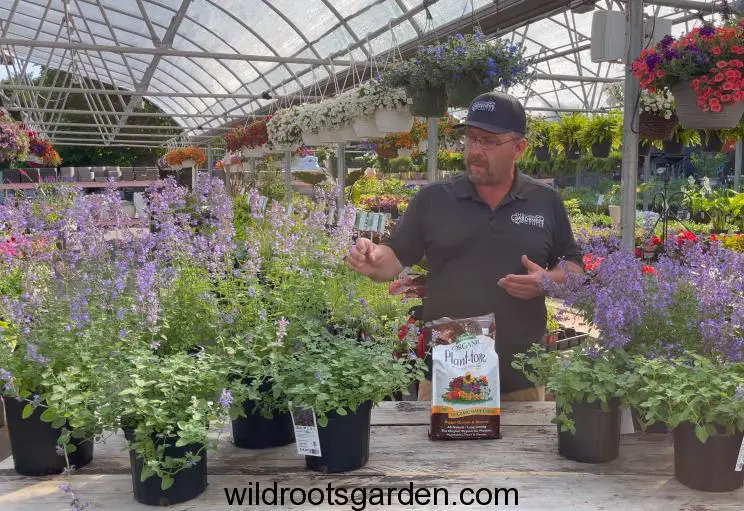
Catmint is a popular choice for perennial gardens because it is easy to grow and low-maintenance. Catmint plants are also tolerant of heat, drought, and poor soil conditions.
Zones: Catmint plants vary in hardiness, but most are hardy in USDA zones 3-9.
Size: Catmint plants can grow to be 1-3 feet tall and 1-2 feet wide, depending on the species.
Growing conditions: Catmint plants prefer full sun or partial shade and well-drained soil. They are tolerant of heat and drought, but they will perform best in moist conditions.
19. Heliopsis
Heliopsis is a genus of flowering plants in the family Asteraceae. It is native to North and South America, and there are over 20 species of annuals and perennials in the genus. Heliopsis is known for its clusters of yellow, orange, or red flowers that resemble sunflowers. Heliopsis flowers bloom in mid-summer and can continue to bloom until the first frost.
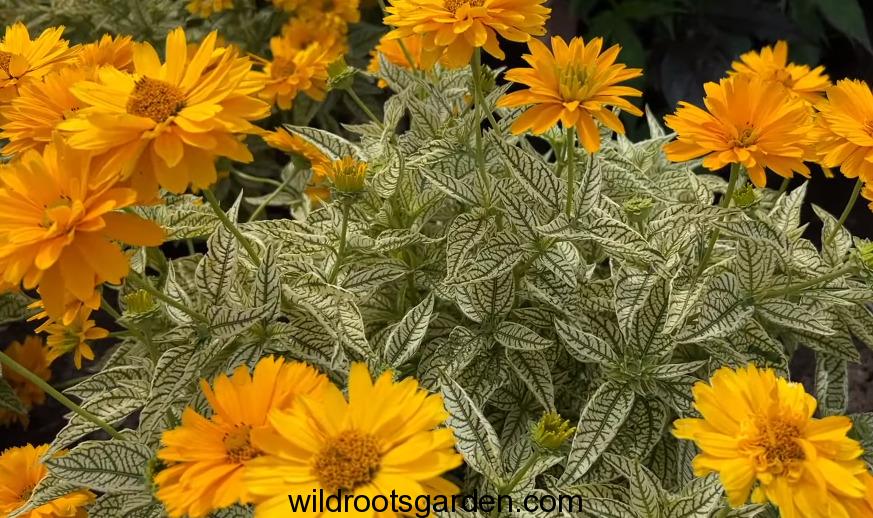
Heliopsis is a popular choice for perennial gardens because it is easy to grow and low-maintenance. Heliopsis plants are also tolerant of heat, drought, and poor soil conditions.
Zones: Heliopsis plants vary in hardiness, but most are hardy in USDA zones 3-9.
Size: Heliopsis plants can grow to be 1-3 feet tall and 1-2 feet wide, depending on the species.
Growing conditions: Heliopsis plants prefer full sun or partial shade and well-drained soil. They are tolerant of heat and drought, but they will perform best in moist conditions.
20. Hibiscus
Hibiscus is a genus of flowering plants in the family Malvaceae. It contains over 250 species of annuals, perennials, shrubs, and small trees. Hibiscus is native to tropical and subtropical regions around the world, and it is widely cultivated for its beautiful flowers.

Hibiscus flowers come in a wide variety of colors, including red, orange, yellow, pink, purple, and white. Hibiscus flowers can be single or double blooms, and they can be up to 12 inches in diameter. Hibiscus flowers are often fragrant and attract butterflies and hummingbirds.
Hibiscus is a popular choice for gardens and landscapes because it is easy to grow and bloom all summer long. Hibiscus plants are also relatively low-maintenance and can tolerate heat, drought, and poor soil conditions.
Zones: Hibiscus plants vary in hardiness, but most are hardy in USDA zones 3-9.
Size: Hibiscus plants can grow to be 3-10 feet tall and 3-6 feet wide, depending on the species.
Growing conditions: Hibiscus plants prefer full sun or partial shade and well-drained soil. They are tolerant of heat and drought, but they will perform best in moist conditions.
21. Penstemon
Penstemon, also known as Beardtongues, is a genus of herbaceous perennial plants in the family Plantaginaceae. It contains over 250 species of plants native to North and South America. Penstemon is known for its tubular flowers in a variety of colors, including red, pink, purple, white, and yellow. Penstemon flowers bloom in mid-summer and can continue to bloom until the first frost.
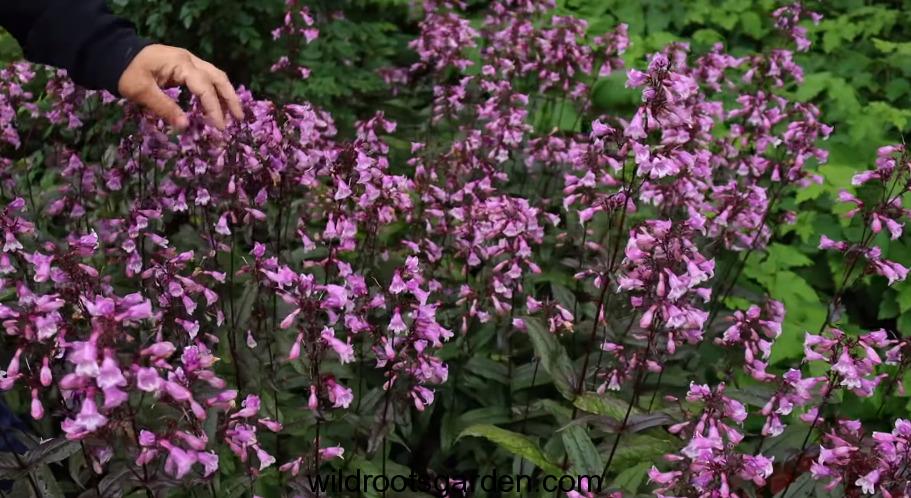
Penstemon is a popular choice for perennial gardens because it is easy to grow and low-maintenance. Penstemon plants are also tolerant of heat, drought, and poor soil conditions.
Zone: Penstemon plants vary in hardiness, but most are hardy in USDA zones 3-9.
Size: Penstemon plants can grow to be 1-3 feet tall and 1-2 feet wide, depending on the species.
Growing conditions: Penstemon plants prefer full sun or partial shade and well-drained soil. They are tolerant of heat and drought, but they will perform best in moist conditions.
Source
1.https://www.bloomingbackyard.com/perennials-that-bloom-all-summer/
2.https://www.bhg.com/gardening/flowers/perennials/reblooming-beauties-for-the-garden/
3.https://www.marthastewart.com/1502622/perennial-flowers-add-color-your-summer-garden

